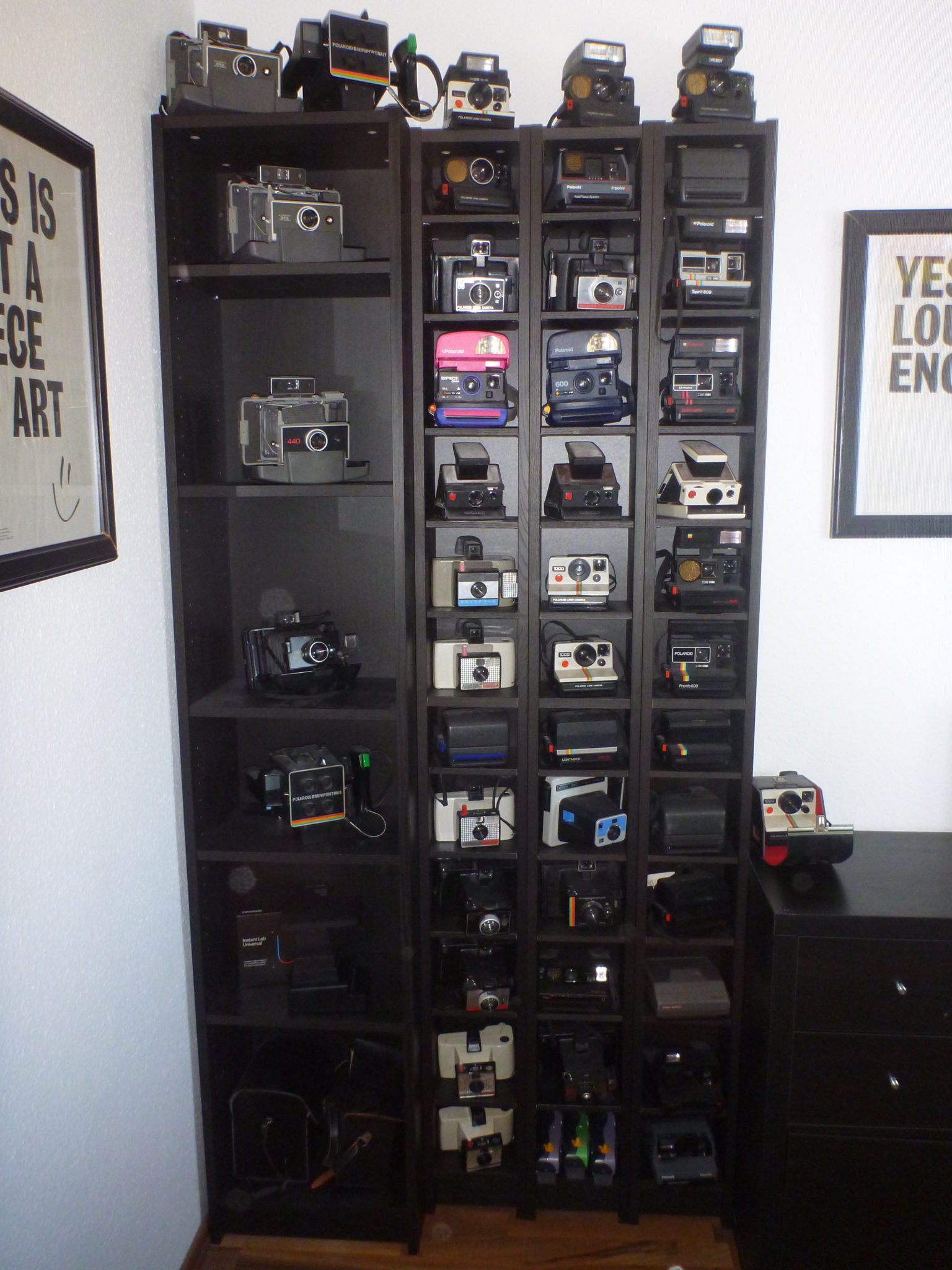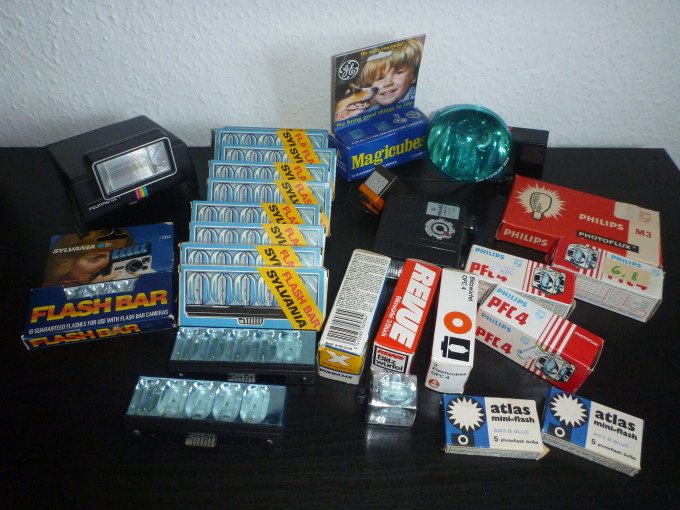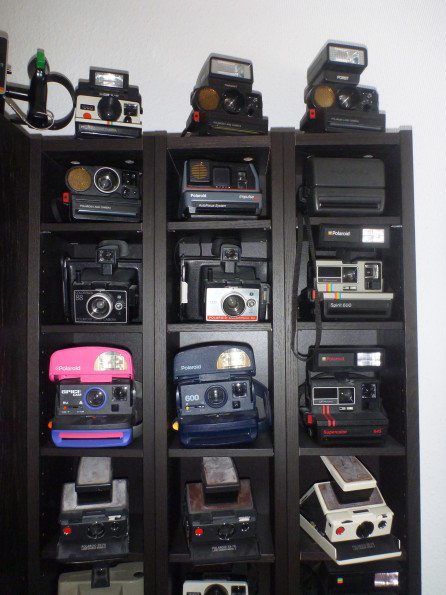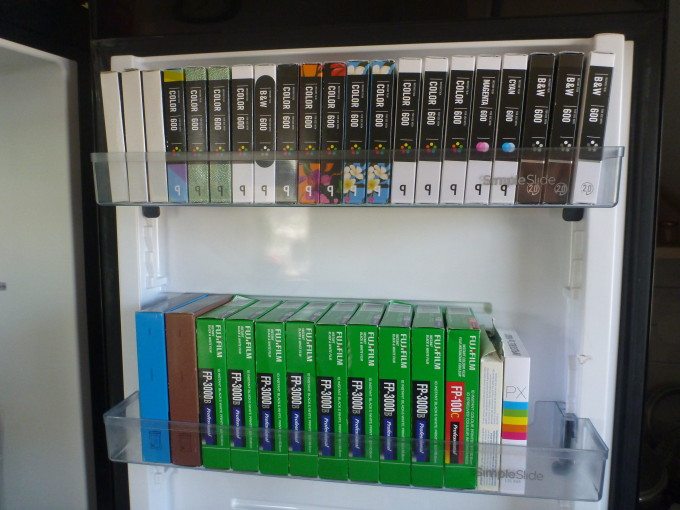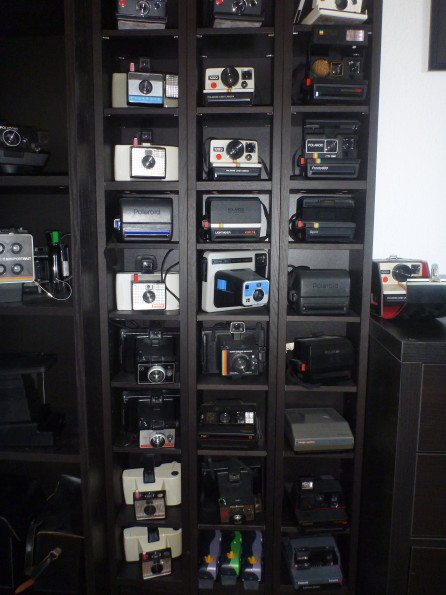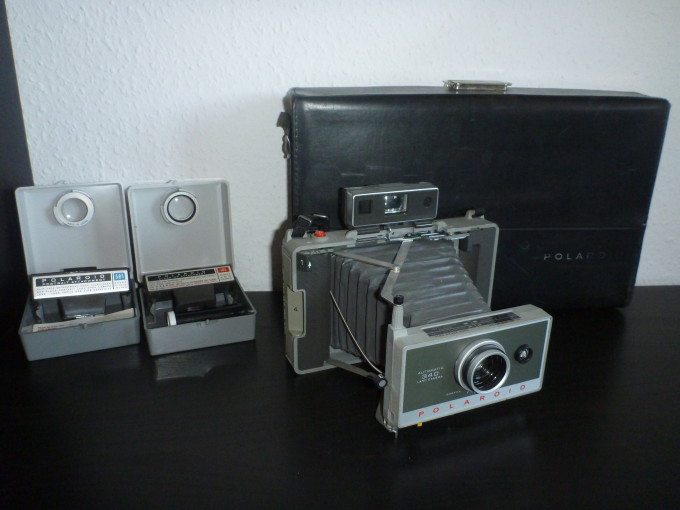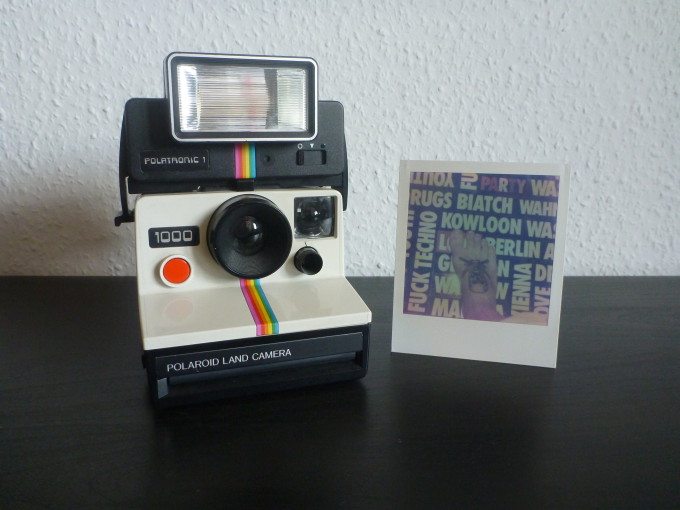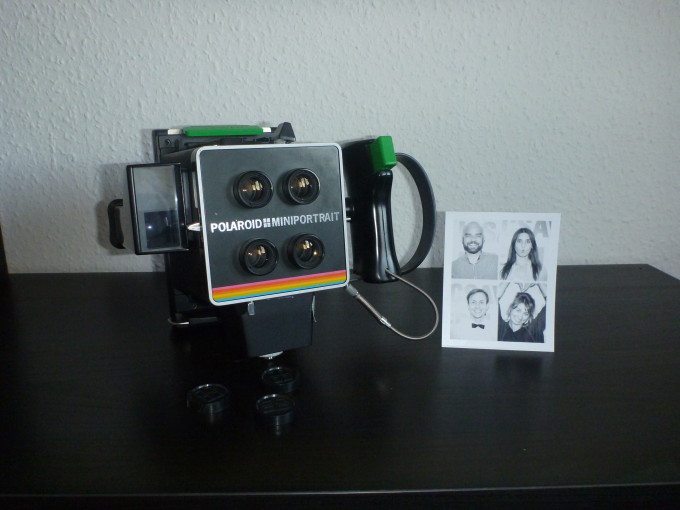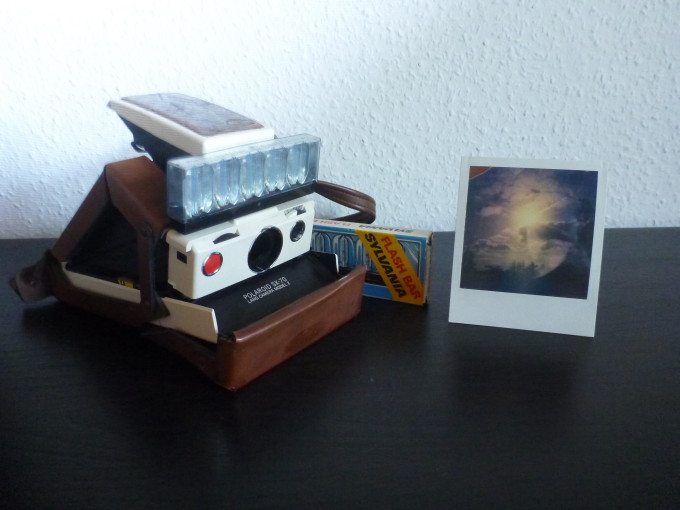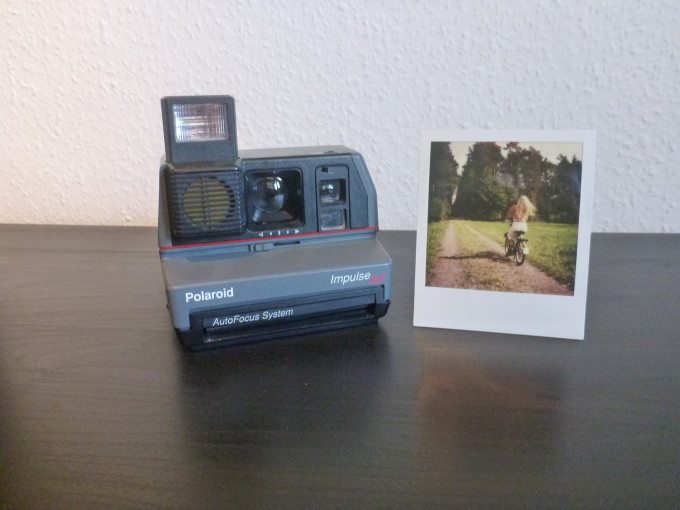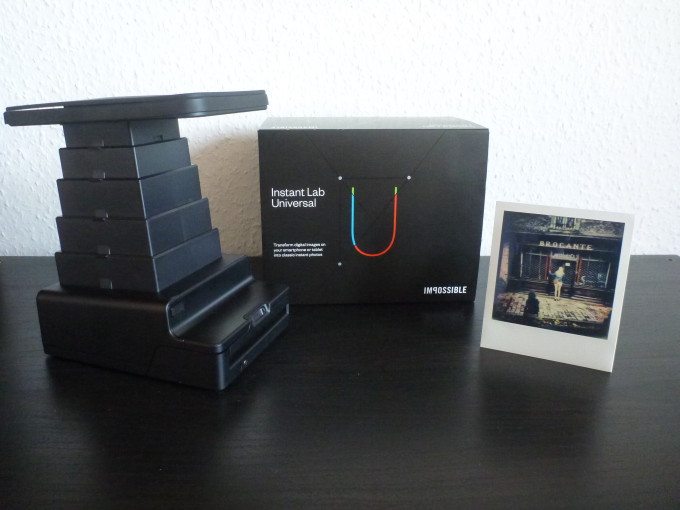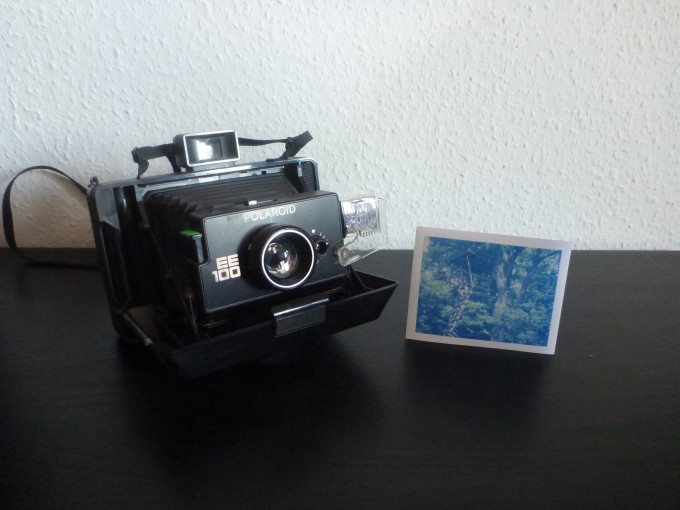All images by Julian Jacobi. Used with permission.
Photographer Julian Jacobi has quite the collection of Polaroid cameras. He’s been collecting them for years upon discovering his sister’s camera and after hearing about the Impossible Project many years ago. Like many Polaroid shooters, he’s smitten for the SX-70 but he also really loves a lot of Land Cameras. In the time that he’s spent researching and hunting for these cameras, he’s become a bit of an expert on Polaroids.
We talked to Julian about his Polaroid collection, how to find new (used) cameras, and where to start in the world of Instant film.
Phoblographer: What made you want to get into collecting these cameras?
Julian: It all started in 2010 when I read that the Impossible Project started to produce Instant Film again. I remembered the Polaroid 600 Camera my older sister used back in early 90’s. So I started searching the flea market boxes my parents got stashed in the basement, until I found the camera of my sister.
At the end of 2010 I started a 3 Month trip through South-East-Asia and I took the 600 with me. That was the time I started to fall in love with shooting Polaroids. I quickly abandoned my 35mm analog camera which I also had with me. When I got back to Germany, I was totally hooked to the experimental touch and unexpected colors of the Polaroids. I wanted more, so I started searching “new” Polaroids on flea markets. Things escalated quickly and 5 years later I have bookshelves full of Polaroids, always looking to find some new cameras for my collection.
Phoblographer:What are your favorites?
Julian: One of my favorites is the Polaroid Miniportrait 402. They where produced from 1977 till 1980 as passphoto cameras, using Type 100 packfilm. Fun thing is, the camera has 4 lenses which are transferring 4 similar passphotos to the picture. If you cover 3 lenses while shooting, you can expose the picture 4 times to get 4 different portraits on the film. I used this camera for my wedding, taking pictures of our guests. It’s definitely always a big party gag pulling out the camera, having your own “photobooth”.
I also really love the Polaroid SX-70 Land Camera Model 2. These folding SLR are easy to travel with. Not only is the SX-70 an impressive piece of technic and a part of history, but you also can take awesome pictures with it.
Phoblographer: Which ones do you find yourself using the most?
Julian: I ended up using a Polaroid Impulse AF from 1988 the most. It really is a “you can’t do anything wrong” type of camera. It uses the Sonar Autofocus System which make it very simple to get good pictures from it. The lens is a three element plastic lens with fixed aperture (116mm, f9). It also has a build in self-timer which is the reason the camera is my first choice to take with me on holidays or trips. You can give it to a stranger asking him to take a picture of you by simply explaining him “please push this button after the green light flashes”. So it’s the perfect Polaroid for using in the everyday life.
Phoblographer: Which one is the most interesting or unusual to you?
Julian: At the moment the most interesting camera I own is the Instant Lab by The Impossible Project. It exceeds the borders of analog and digital photography which is very exciting to see. I had mixed feelings when I first heard about the Instant Lab. You can put your smartphone on the Instant Lab and turn any digital picture into a Polaroid? That kills the unique flair, was my first thought. But after trying it for myself I have to admit it’s a whole new level of creating Polaroids. You can add filters, change colors etc. but the pictures still has the soul and the unexpected features of a classic Polaroid picture. Because of this mix of two big contrasts, digital and analog photography, the instant Lab is the most interesting camera for me at the moment. That’ll might change when I get my hands on a Mint SLR670m.
Phoblographer: What made you get into photography?
Julian: I was always the guy in our clique who was running around with a camera. Shooting pictures at parties, at the lake in the summer, or on christmas with the family. Somewhat around 2006 my PC crashed and the hard drive with all my digital pictures from the last ten years on it got destroyed. No backup. At this point I quit digital photography for myself. I started using Lomo 35mm cameras, 120 roll film cameras and an analog SLR I bought at a garage sale. That was when I got into analog photography. But after 2010, instant photos are my main hobby.
Phoblographer: How many cameras are in your collection?
Julian: Right now there are 48 Polaroids in my collection. But that always changes. I often give Polaroids as a birthday present for friends, and I am always looking out for new ones on flea markets. My father also brings me Polaroids if he finds some, he’s awesome.
Phoblographer: If someone wants to buy a real working vintage Polaroid camera, what advice could you give them and what should they look out for?
Julian: If you don’t want to try your luck on the flea market or eBay, and do have some money left you can always grab some good cameras at The Impossible Project (www.the-impossible-project.com).
They are refurbishing old Polaroids and selling all kinds of models on their website. If your favorite Polaroid isn’t for sale right now, you should look again from time to time. They’re always adding new cameras to the shop. For me, the upper class of refurbished Polaroids is a company called Mint (www.mint-camera.com). These people from Hong kong started their company refurbishing all kinds of SX and SLR Polaroids. They even created their own SLR Polaroid with manually adjustable shutter speed, which allows you to take long exposures. These camera is definitely my next to go, if I have the money. But if you are like me, you probably don’t have 500$ to spend for a new Polaroid, so your best chance to find one, are flea markets, garage sales, Craigslist or eBay. I prefer flea markets and garage sales obviously because you can touch the camera and take a closer look at it. Good indicators for a working Polaroid are the rollers where the picture comes out. Dirty rollers will lead to spots on the picture. Or a bent output spring for example will let some light inside that can ruin the picture. You can also take an empty film cartridge with you. That’ll show you if the electronics in the camera are still working.
Phoblographer: What Polaroid cameras do you personally recommend and why?
Julian: Beginners should start with a standard Polaroid 600 from the 90’s. They’re cheap to get, starting at 1$ and you can’t do much wrong except maybe forget to set the distance correctly.
If you’re more advanced and want to experiment a little more you should go with a SX-70 folding camera. These SLR is setting the aperture and exposure time on its own, focussing works manually. Playing around with the focus depth while manually focussing is really a fun thing to do with this camera.


